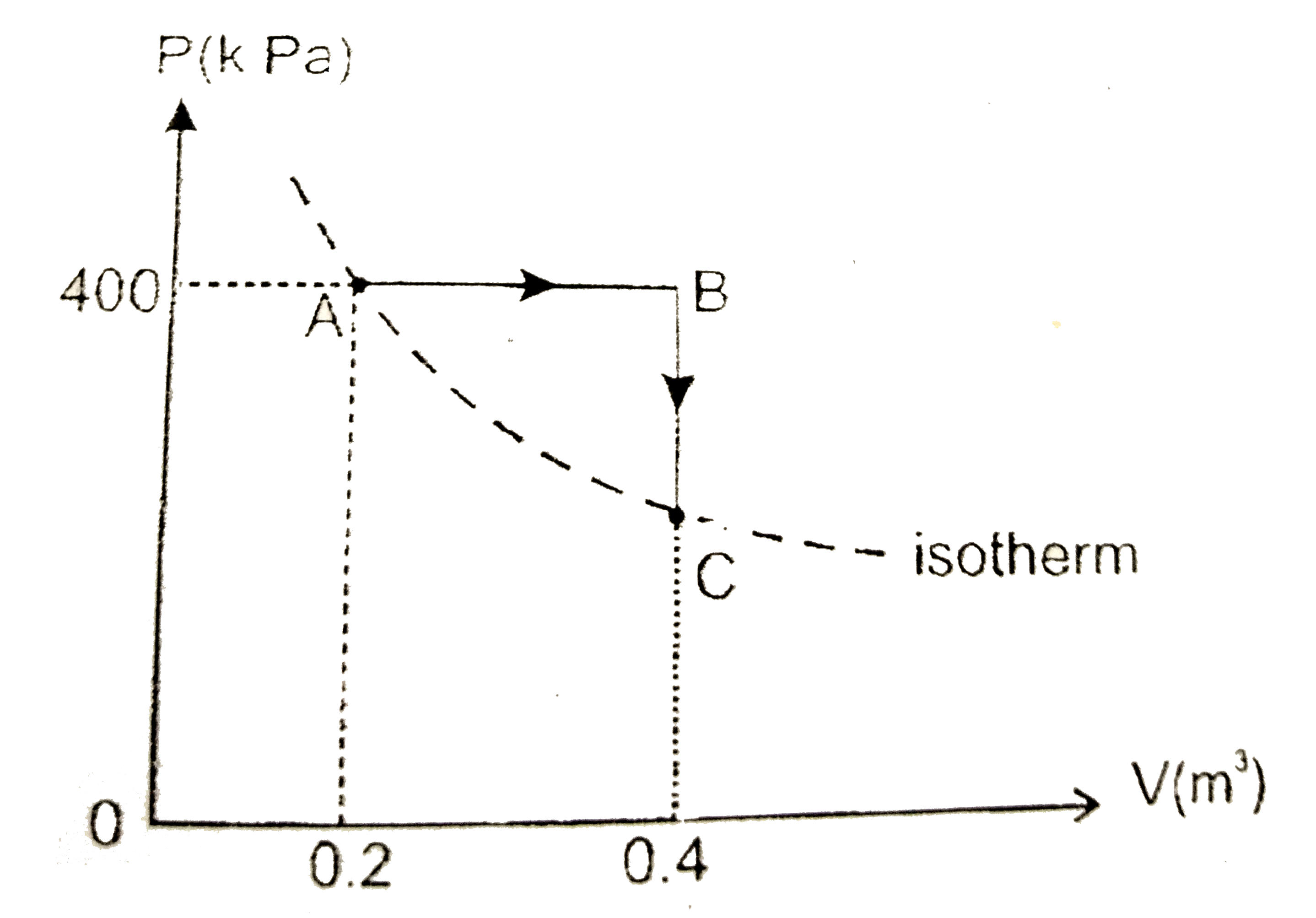P-V curve of a diatomic gas is shown in the Fig. Find the total heat given to the gas in the process
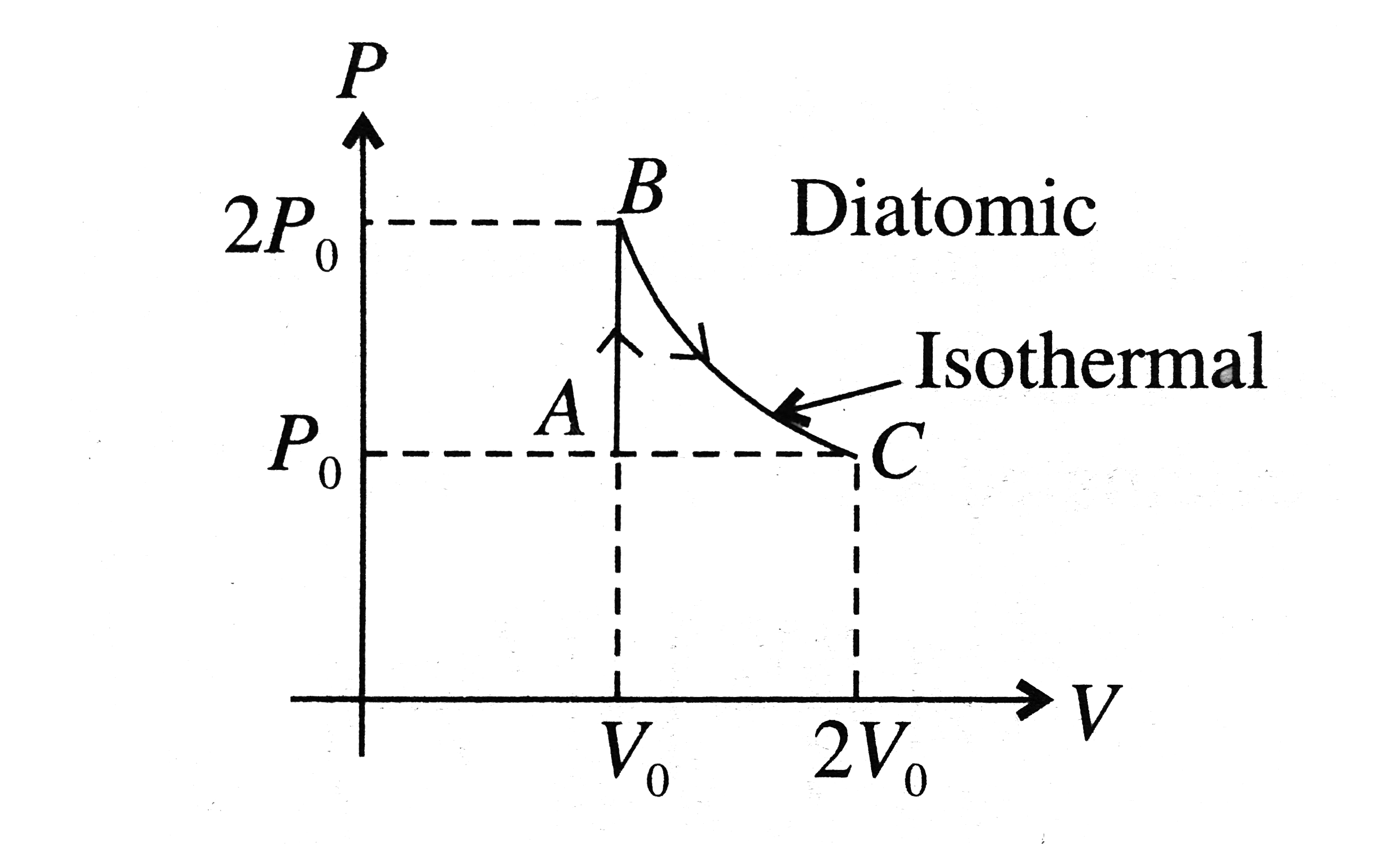
From first law of thermodynamics
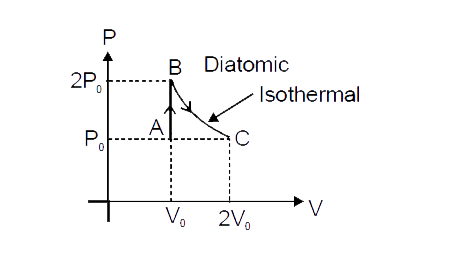
Topper's Solved these Questions
- HEAT-2 Book:MOTIONChapter:HEAT-2 Exercise:EXERCISE-1
Explore 40 Videos
- HEAT-2 Book:MOTIONChapter:HEAT-2 Exercise:EXERCISE-2 (LEVEL-I)
Explore 24 Videos
- HEAT TRANSFER & THERMAL EXPANSION Book:MOTIONChapter:HEAT TRANSFER & THERMAL EXPANSION Exercise:Exercise - 3 Section-B
Explore 19 Videos
- HYDROSTATIC, FLUID MECHANICS & VISCOSITYBook:MOTIONChapter:HYDROSTATIC, FLUID MECHANICS & VISCOSITYExercise:EXERCISE -3 (SECTION-B) PREVIOUS YEAR PROBLEM
Explore 7 Videos
Similar Questions
Knowledge Check
The P−V diagram of 2 gm of helium gas for a certain process A→B is shown in the figure. What is the heat given to the gas during the process A→B?
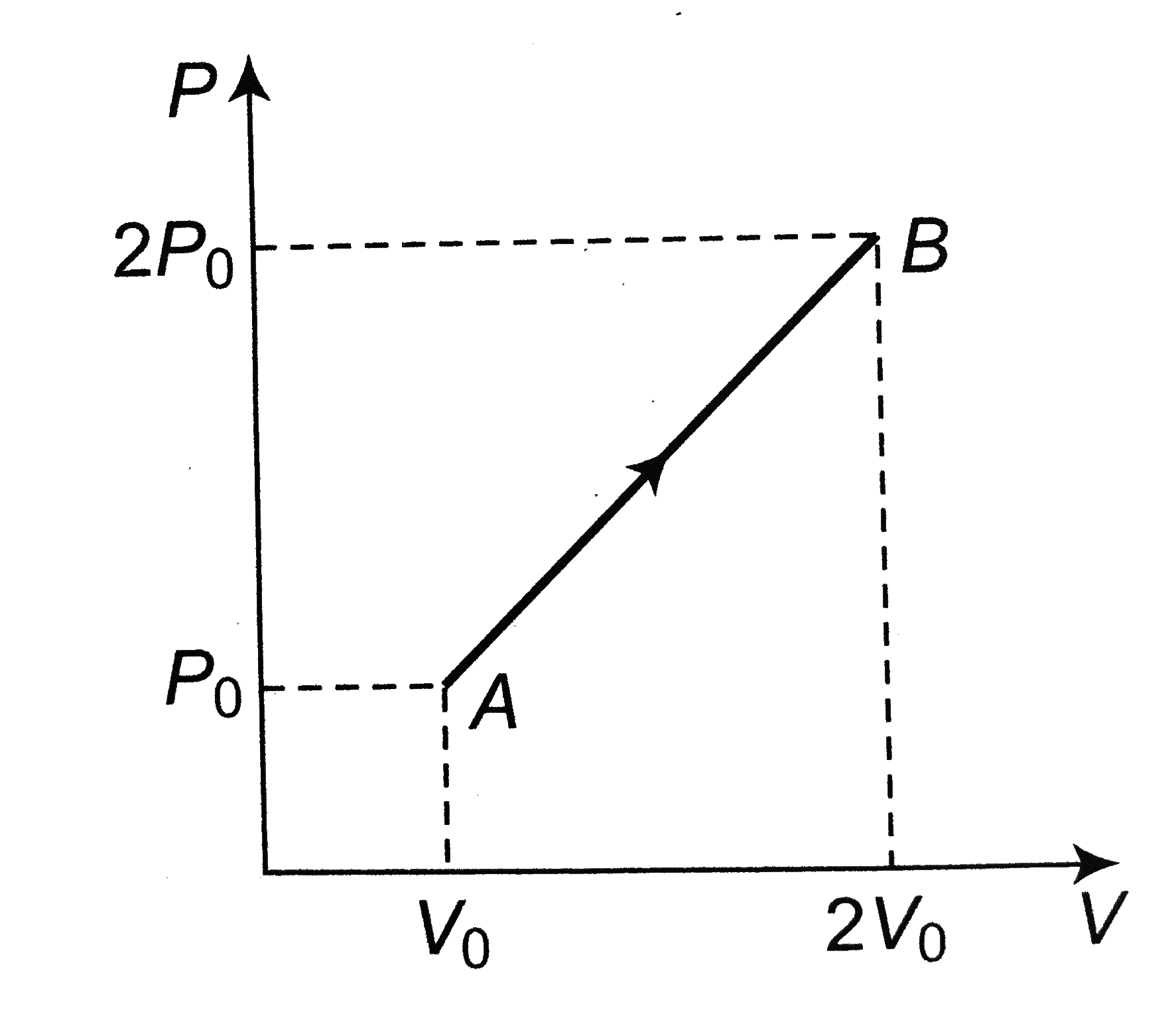 A4P0V0B6P0V0C4.5P0V0D2P0V0
A4P0V0B6P0V0C4.5P0V0D2P0V0Corresponding to the process shown in figure, what is the heat given to the gas in the process ABCA?
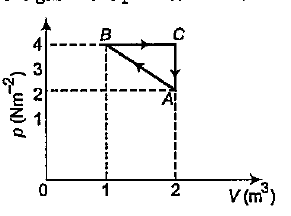 A1JB32JC12JD0
A1JB32JC12JD0P-V diagram of a diatomic gas is a straight line passing through origin. The molar heat capacity of the gas in the process will be
A4RB2.5RC3RD4R3
Find work done in the process A → B (isothermal) by gas?
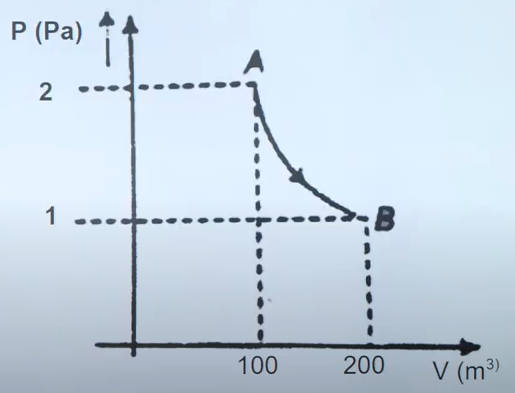
View Solutionp-V diagram of an ideal gas for a process ABC is as shown in the figure.
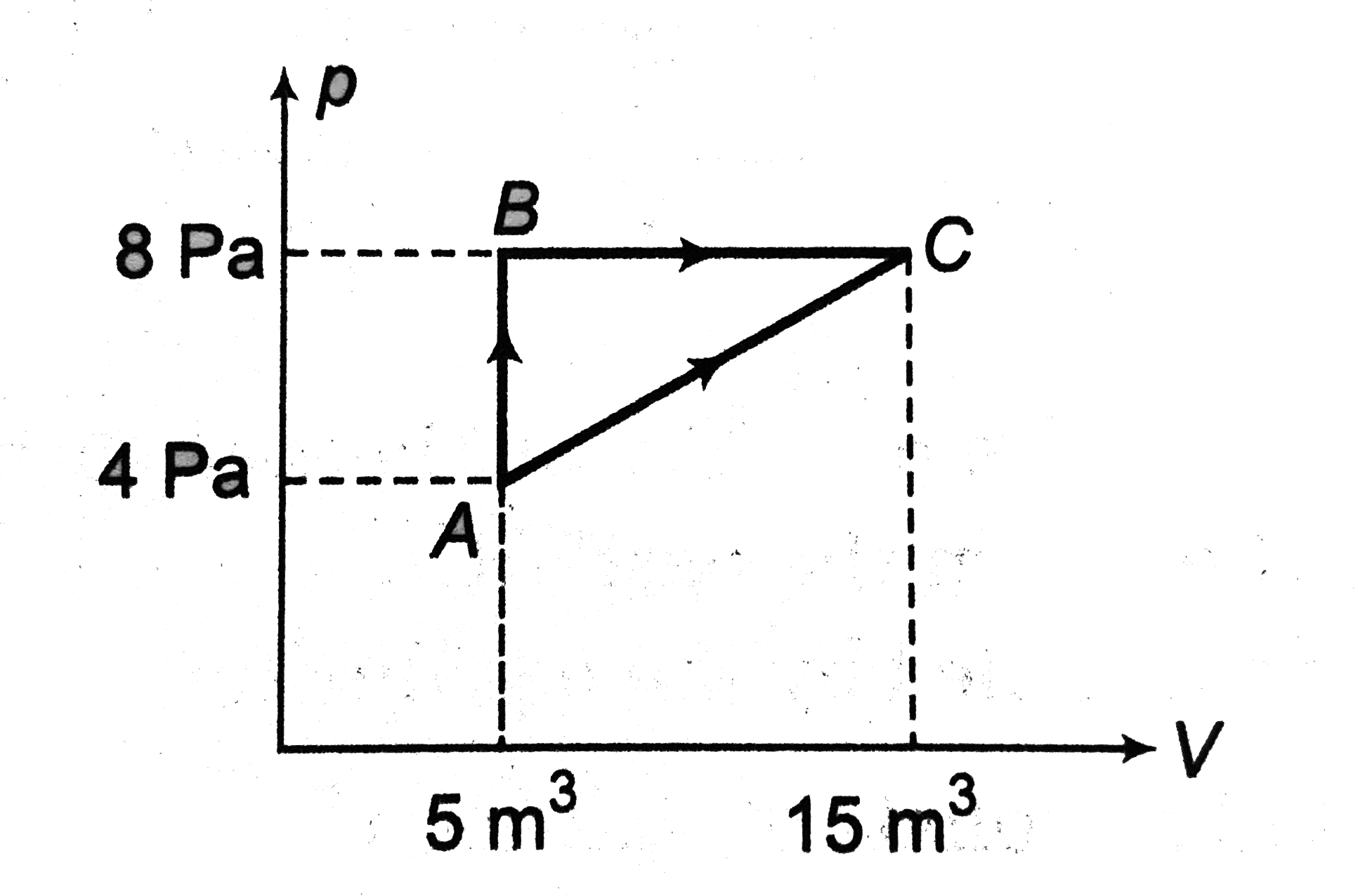
(a) Find total heat absorbed or released by the gas during the process ABC.
(b) Change in internal energy of the gas during the process ABC.
(c) Plot pressure versus density graph of the gas for the process ABC.
View SolutionA diatomic gas does 100 J of work when it is expanded isobarically. The heat given to the gas during this process is
View SolutionP - V diagram of a diatomic gas is a straight line parallel to P-axis. The molar heat capacity of the gas in the process will be
View SolutionThe variation of pressure P with volume V for an ideal diatomic gas is parabolic as shown in the figure. The molar specific heat of the gas during this process is
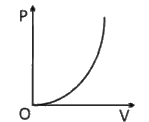
View Solution
